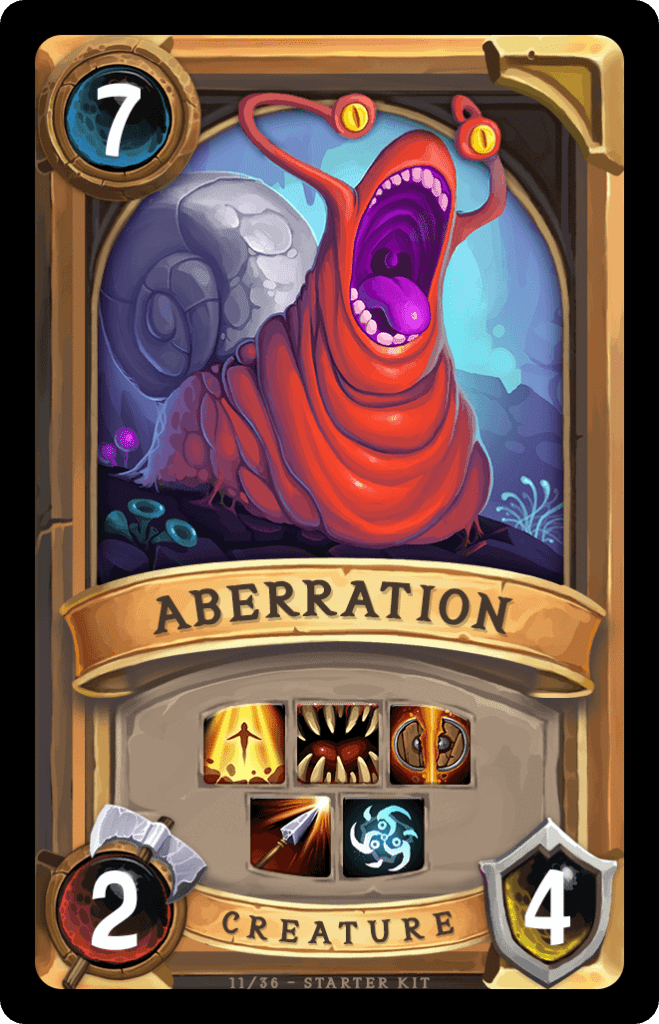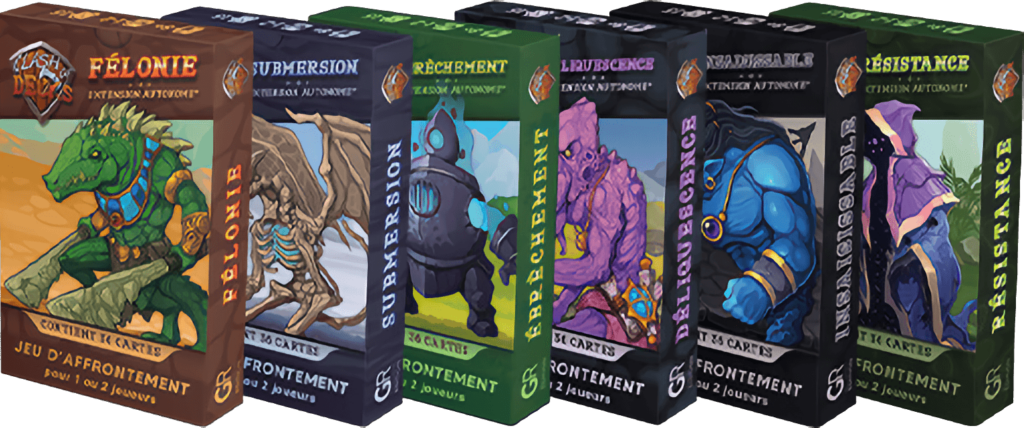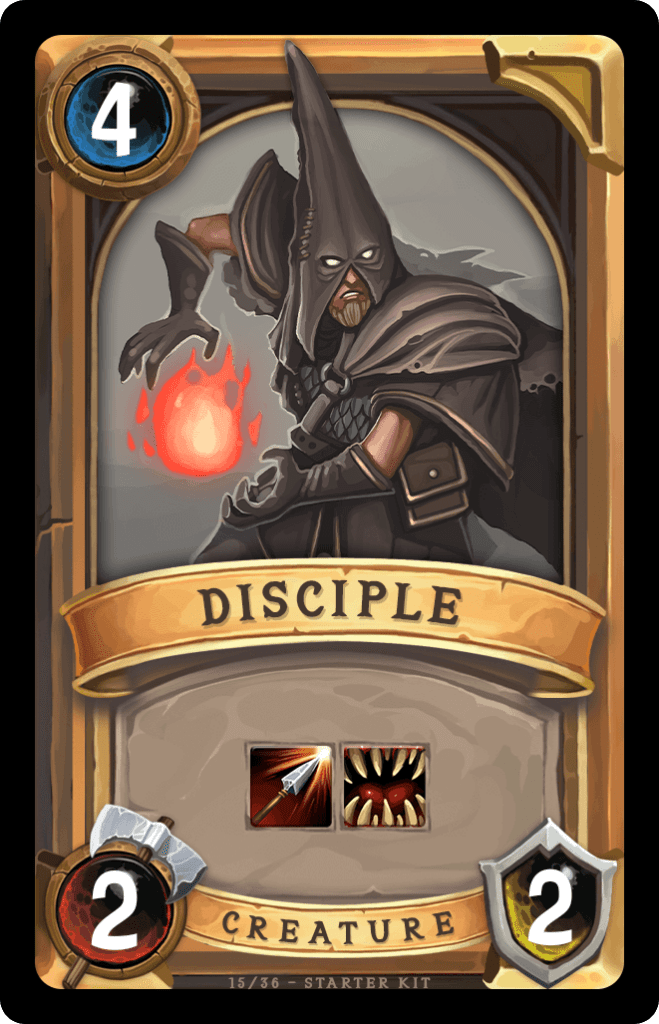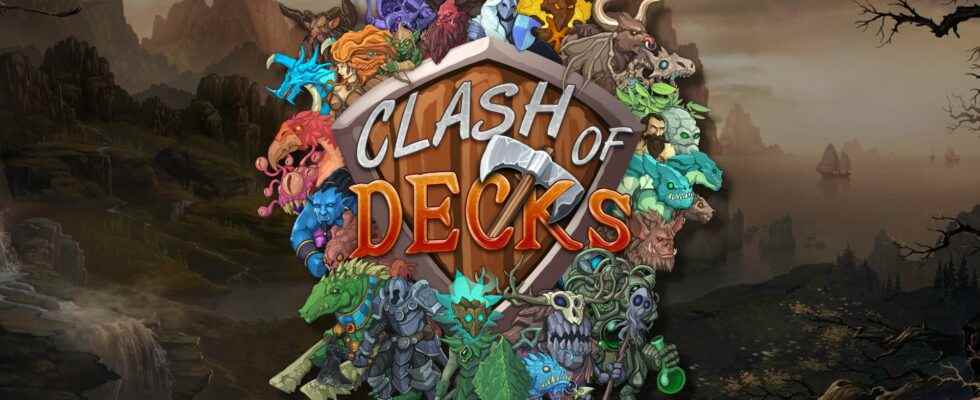This week, we offer you a very original board game. It is not so much by its mechanisms that Clash of Decks stands out, but by its mode of distribution…
The crossings between video games and board games are more and more frequent, whether they are adaptations or the use of licenses from one to the other. But Clash of Decks goes even further in this parallel, since it adopts the method of distribution of some of the most fashionable titles: the free-to-play ! But let’s first see what it’s all about, playfully speaking.
Clash of Decksis only made up of cards, about thirty in the initiation pack, all different. Three modes are offered, which simply determine the cards in his deck (his deckhence the name of the game), the game itself being played in exactly the same way.
So, when we discover the game, we use a pre-built package. Subsequently, either we build it in advance, or this stage is integrated into the game, by dividing up the cards with his opponent (the principle of draft ).
In any case, we start with eight cards in hand, and we add a ninth, the fortress, to the far left. On your turn, you can play cards from your hand, but only from the first four leftmost. You have to spend mana for this, between 0 and 7 depending on the cards. The quantity available is equal to the number of cards in hand at the start of the turn.

Most are creatures, with an attack value, hit points, and special abilities represented by icons. We put them on our side, in single file behind one of the two bridges that separate our kingdom from that of our adversary. A few are incantations, which go right back into our hand, after being played and their effect applied.

Then our creatures attack, giving priority to the opposing creatures opposite the corresponding bridge, if there are any. A destroyed creature returns all right to its owner’s hand. If there is no opposition in front, they attack the opponent directly. For each damage, the latter shifts his fortress card one position to the right in his hand. At the end, she turns left. But if it comes back a second time all to the right, we lose the game.
There are a few rules subtleties (a creature that arrives in the turn does not attack, they attack in a certain order, etc.), but it is above all their twenty or so special abilities that make the game so rich, by influencing their attack, their defense, etc.
Note finally the presence of a variant to play alone, in which we fight against the remaining creatures, which are not in our deck and must be destroyed one by one to reach the end of the packet.
Why play Clash of Decks?

Appearance free-to-play is obviously the most atypical element of Clash of Decks . It is, to our knowledge, the first “real” board game operating on this principle (if we exclude prototypes, games to print and cut, etc.).
As in a video game, the initiation pack, already very complete with its four decksprebuilt, is free, available in stores or on the publisher’s website, with only any shipping costs at your expense. Thereafter, you have the possibility of enriching it with different extensions. Two are already available, Felony and Submersion. Each focuses on two special abilities, adds as many new cards as the starter pack, and they stand on their own. Others are planned in the coming months.
But, beyond its free nature, what about its playful qualities?
Clash of Decksis a game of confrontation, strategy, minimalist, with fast and tense games. It is surprising in many respects, in particular its depth, which one does not suspect at first sight. Its great originality is also one of its strengths. Games in which you have to keep the order of your cards in your hand are not common (we think of Body Combo, Scout , Hanabi and that’s all).

The first two or three parts, which must be done with the decks prebuilt, are a bit laborious and sluggish. Despite its very simple rules, it takes this time to properly integrate the multiple icons of creature abilities. We then advise you to go to draft cards, our favorite game mode.

The following parts are much more pleasant and fluid, especially since the game offers a nice learning curve. You learn little by little to manage your hand well, to anticipate your moves and those of your opponent. And we slowly understand the principle of the fortress which navigates from left to right in its hand, according to the cards played, those which return to the right and therefore add life points, etc.
We also quickly understand, usually in pain the first time, that the more creatures we have in play, the less mana we gain, and the more vulnerable we are to direct attacks from our opponent.
Clash of Decks is a real good surprise. Its component free-to-play is not synonymous with a game without interest, sloppy, or to be forgotten. Quite the contrary. It offers a rich experience, with minimalist hardware and simple rules. It is not unlike other successful card games, Hearthstoneon your mind. His very nice illustrations are no strangers to this. It requires strategy, anticipation, opportunism, a little programming, all in a short time. And its many extensions promise it a long life.
- Clash of Decksis a game by Léandre Proust
- Illustrated by Studio Rexard
- Published by Grams Edition
- For 1 or 2 players from 8 years old
- For games of about 15 minutes
- At the price of 0 € at Philibert (for the initiation pack)
The verdict
We liked
- A minimalist material
- Very simple rules
- The mechanics of managing his hand, original and very interesting
- A beautiful strategic depth, sprinkled with opportunism
We liked less
- Lots of icons to ingest during early playthroughs
Some links in this article are affiliate. We’ll explaine everything here.
